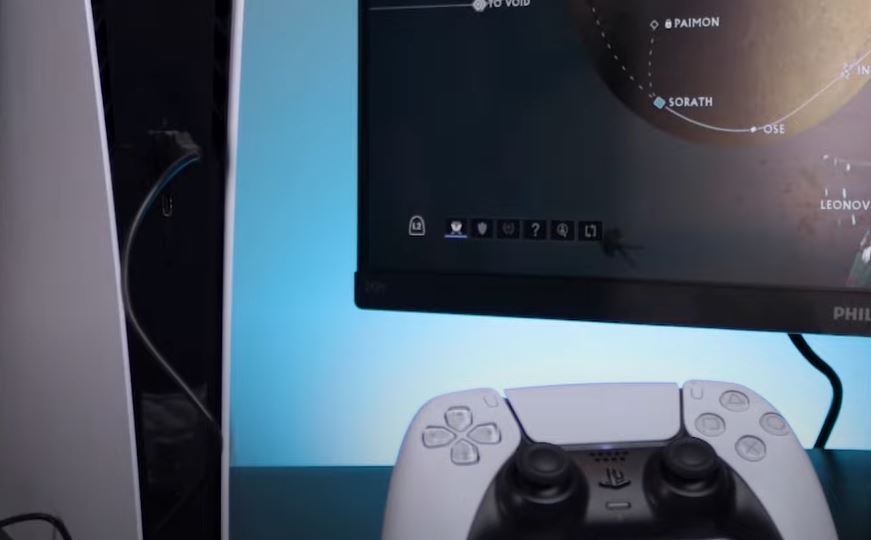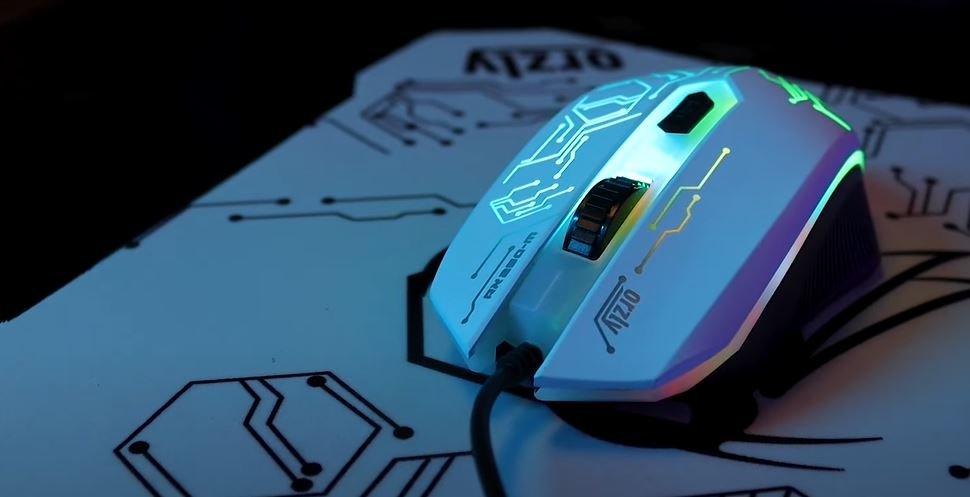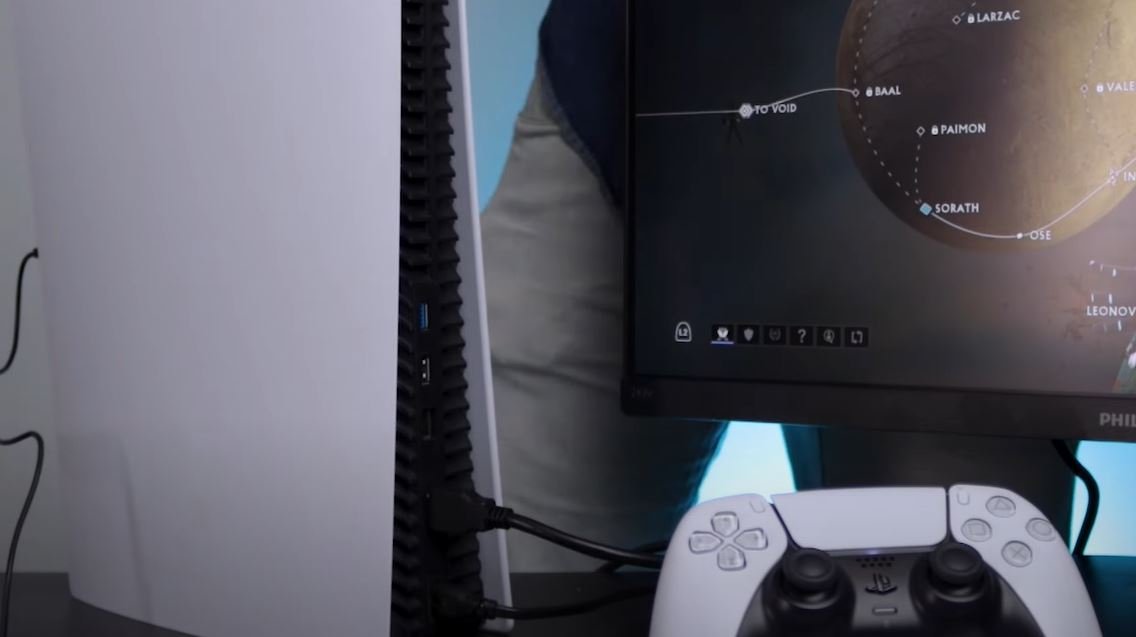In today’s gaming world, precision and control can often make the difference between victory and defeat. For PS5 gamers looking to enhance their gameplay experience, using a keyboard and mouse provides a significant advantage. In this guide, we’ll walk you through the straightforward process of connecting and configuring a keyboard and mouse to your PS5, ensuring you’re ready to dominate the virtual battlefield.
Getting Started: Connecting Your Devices
To begin, you’ll need a compatible keyboard and mouse. While we’re using the RX250K keyboard and RX250M mouse for this tutorial, the process remains largely the same for most USB peripherals compatible with PS5.

- Locate the USB Ports: The PS5 console offers multiple USB ports – two at the back and one at the front. Plug your keyboard into one of the ports at the back and your mouse into the front port. Avoid plugging both devices into the back simultaneously to prevent any connection issues.
- Confirming Connection: Upon plugging in, your keyboard and mouse should light up if they have RGB lighting, indicating they are powered. Although you won’t immediately see the mouse cursor on the screen, you can use the keyboard arrow keys to navigate the PS5 home screen.
Setting Up Your Devices
Once connected, it’s essential to configure your keyboard and mouse settings to optimize your gaming experience.

- Accessing Settings:
- Press the PS button on your controller to access the PS5 home screen.
- Navigate to “Accessories” to verify that your keyboard and mouse are recognized.
- Configuring Mouse Settings:
- Under “Settings,” select “Mouse.”
- Choose between left-handed and right-handed mouse settings based on your preference.
- Adjust the mouse pointer speed to suit your gameplay style.
- If your mouse has a DPI switch, use it to toggle between different DPI settings for varying levels of responsiveness.
- Configuring Keyboard Settings:
- Navigate to “Settings” and select “Keyboard.”
- Adjust the keyboard type to match your preferred language.
- Set the key repeat delay (the time before a key starts repeating) and key repeat rate (how quickly a key repeats).
Gaming with Keyboard and Mouse on PS5
Now that your devices are configured, you’re ready to jump into your favorite games. It’s important to note that while PS5 supports keyboard and mouse inputs natively, game compatibility may vary depending on developer decisions.

- Checking Game Compatibility:
- Before diving into gameplay, ensure that the game you want to play supports keyboard and mouse inputs. Not all games, especially first-party titles, may fully utilize these peripherals.
- Enhancing Gameplay:
- Experience enhanced precision and control in games like Warfare, where aiming with a mouse offers distinct advantages over traditional controllers.
- Use the DPI switch on your mouse to quickly adjust sensitivity according to gameplay needs, whether for precise aiming in shooting games or smooth camera movements in exploration games.
Conclusion
Setting up a keyboard and mouse on your PS5 is a straightforward process that significantly enhances your gaming experience, providing better accuracy and control in supported games. Remember to check game compatibility before getting started to ensure a seamless transition to keyboard and mouse gameplay.
Frequently Asked Questions (FAQs)
1. Can any keyboard and mouse work with PS5?
- Most USB keyboards and mice should work with PS5. However, it’s recommended to use peripherals that are explicitly compatible with PlayStation consoles to ensure full functionality.
2. How do I know if my keyboard and mouse are connected properly?
- After plugging them into the USB ports on your PS5, check if the devices light up (if they have RGB lights). You can also navigate using the keyboard arrow keys on the home screen to confirm connectivity.
3. Can I adjust settings like mouse sensitivity and keyboard layout on PS5?
- Yes, PS5 allows you to customize mouse pointer speed, switch between left-handed and right-handed mouse modes, adjust keyboard language settings, key repeat delay, and key repeat rate. These settings can be accessed through the PS5 system settings under “Accessories.”
4. Do all PS5 games support keyboard and mouse inputs?
- No, game support for keyboard and mouse inputs varies. While many games support these peripherals, it ultimately depends on the game developer’s decision. Check game-specific information or our compatibility list for more details.
5. How can I switch between different DPI settings on my mouse during gameplay?
- If your mouse has a DPI switch, you can toggle between different DPI settings by pressing the designated DPI switch button. This allows you to adjust mouse sensitivity on the fly according to your gaming needs.
6. What advantages do keyboard and mouse offer over controllers on PS5?
- Keyboard and mouse setups typically offer more precise aiming, faster input response times, and customizable controls compared to traditional controllers. This can lead to improved accuracy and performance in various types of games.
7. Can I use a wireless keyboard and mouse with PS5?
- Yes, you can use wireless keyboards and mice with PS5, provided they are compatible and have a USB receiver that can be plugged into the console’s USB ports. Ensure that the wireless peripherals are fully charged or have fresh batteries for uninterrupted gameplay.
8. Is it easy to switch back to using a controller after setting up a keyboard and mouse?
- Yes, switching back to using a PS5 controller is straightforward. Simply turn on the controller, press the PS button, and it will resume control of the console seamlessly.
9. Where can I find a list of PS5 games that support keyboard and mouse?
- We provide a list of PS5 games that support keyboard and mouse inputs in the description of our setup video. You can also check the official PlayStation website or gaming forums for updated compatibility information.
10. What should I do if my keyboard or mouse isn’t working correctly after setup?
- First, ensure both devices are properly connected to the PS5’s USB ports. Try using different USB ports if issues persist. If problems continue, check for any available firmware updates for your keyboard and mouse or consult the manufacturer’s support for troubleshooting assistance.
